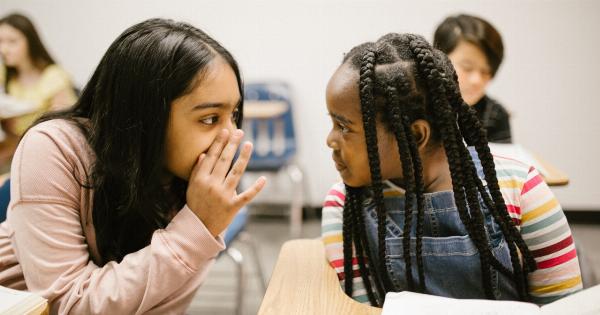Bullying is a pervasive problem that affects individuals of all ages, races, and backgrounds. It causes significant emotional distress and can have long-lasting effects on the victims.
While efforts have been made to combat bullying, it continues to be a prevalent issue in today’s society. In this article, we will explore strategies and solutions for breaking the cycle of bullying and creating a safer environment for everyone involved.
The Impact of Bullying
Bullying can have severe consequences for both the person being bullied and the aggressor. Victims of bullying often experience low self-esteem, depression, anxiety, and academic difficulties.
The emotional trauma caused by bullying can continue into adulthood, leading to a range of mental health issues. For the bully, engaging in aggressive behaviors can have implications for their own social and emotional well-being.
Understanding Bullying
Before we can tackle the issue of bullying, it is essential to understand what it entails. Bullying is a repeated pattern of aggressive behaviors that involve a power imbalance between the bully and the victim.
It can manifest in various forms, including physical, verbal, and cyberbullying. Being aware of the different types of bullying can help identify and address the issue effectively.
Recognizing the Signs
Recognizing the signs of bullying is crucial in order to intervene early and prevent further harm.
Victims of bullying may exhibit various indicators, such as sudden changes in behavior, withdrawal from social activities, unexplained injuries, and a decline in academic performance. Observing these signs and taking them seriously can make a significant difference in putting an end to bullying.
Creating a Supportive Environment
One of the most effective ways to stop bullying is by fostering a supportive and inclusive environment. Schools, workplaces, and communities should prioritize creating an atmosphere where bullying is not tolerated.
This can be achieved by promoting empathy and kindness, implementing anti-bullying policies, and providing resources for intervention and support.
Education and Awareness
Education plays a crucial role in addressing bullying. By raising awareness about the negative impact of bullying, individuals can develop an understanding of the consequences their actions may have on others.
Schools and institutions should implement comprehensive anti-bullying programs that educate students, teachers, and parents about the importance of empathy, respect, and healthy relationships.
Improving Communication
Open and honest communication is vital in preventing and addressing instances of bullying. Encouraging individuals to speak up when they witness bullying can help create a safe space for victims to share their experiences.
It is essential to establish effective channels of communication, such as anonymous reporting systems, to ensure that everyone feels comfortable reporting incidents without fear of retaliation.
Empowering Bystanders
Bystanders play a significant role in the dynamics of bullying. Empowering individuals who witness bullying to intervene and support the victim can help disrupt the cycle of aggression.
Teaching bystanders assertiveness skills, inspiring them to speak up when they witness bullying, and instilling a sense of responsibility can make a profound impact on reducing bullying behaviors.
Supporting the Victims
Providing support to victims of bullying is crucial for their well-being and recovery. Victims often feel isolated and may be hesitant to seek help for fear of additional harassment.
Offering confidential counseling services, support groups, and mentorship programs can provide victims with a safe space to express their feelings and develop resilience.
Consequences and Accountability
Consequences for bullying behaviors are necessary to deter future incidents and hold aggressors accountable for their actions. Schools and communities should implement disciplinary measures that address bullying promptly and effectively.
This sends a clear message that bullying will not be tolerated and ensures the safety and well-being of all individuals.
Parental Involvement
Parents play a critical role in preventing and addressing bullying. By fostering open lines of communication with their children, parents can identify signs of bullying early on and provide the necessary support.
It is essential for parents to educate their children about empathy, respect, and diversity, and to lead by example through their own behavior.
Collaboration and Community Engagement
Combating bullying requires a collective effort from everyone involved. Schools, parents, teachers, and community members should collaborate to create a multi-faceted approach to prevent and address bullying.
Engaging local organizations and community leaders in the conversation can lead to effective solutions and a safer environment for all.





























